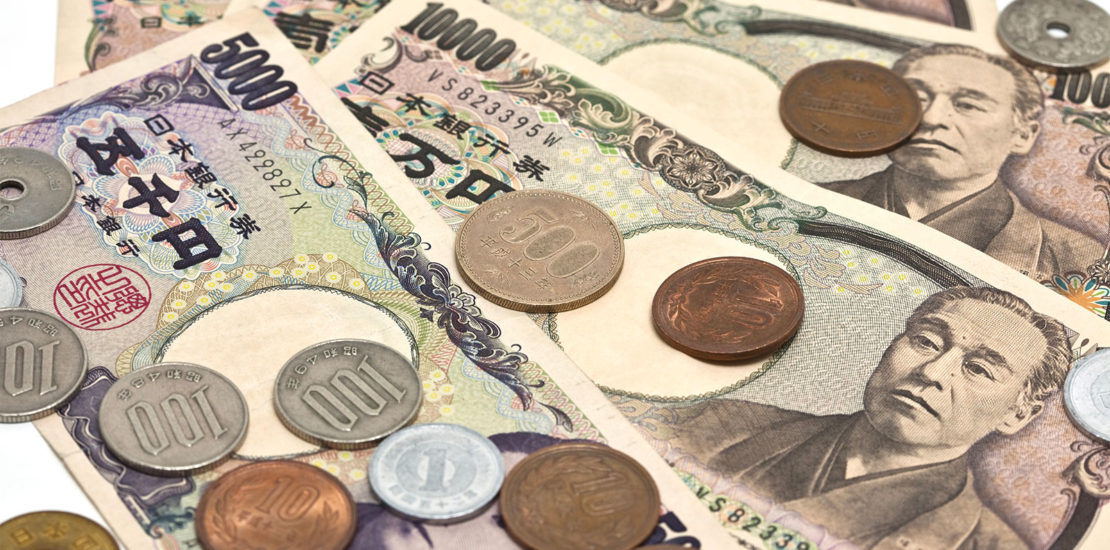
It’s true that in the era of high-speed internet and smart phones, you can handle most of your money matters in Japan using TransferWise or LINE Pay. But when it comes to utilities or specific services, Japan tends to rely on bank transfers. The problem with that is, there’s quite a lot of kanji involved. But don’t worry! In this article, we’ll cover how to make a bank transfer in Japan, as well as all the kanji and vocabulary that comes with it.
What You Need
A 振り込み(furikomi)or bank transfer is a process that can be performed at an ATM or online, if your bank offers online banking. Obviously, to do a bank transfer you’ll need a bank account. In addition, you’ll need your cash card or bank book for an ATM transfer and the following information about the person or organization to whom you’re transferring funds:
- 口座名義(kouza meigi)- The account holder’s name. This could be the name of a company, but it’s more likely to be an individual’s name. Be sure you have the right kanji if the person is Japanese. Reversing a bank transfer sent to the wrong person by mistake can be a complicated, lengthy process.
- 銀行名(ginkou mei)- The name of the bank or financial institution. Depending on the ATM or website you’re using, this might also be called 金融機関名(kinyuu kikann mei). Most of the major bank names are offered as a suggested list, but just in case the payee’s bank is a minor bank in Japan, you might want to know the 読み方(yomi kata)or pronunciation of the bank’s kanji. In the case of a minor bank, you might have to enter the name manually.
- 支店名(shiten mei)- The branch name. Depending on the bank, this could either be a number written fully in kanji like 一二三 or a regular name. You’ll need to know the yomi kata for the branch name, as you’ll be inputting the first few characters manually.
- 口座科目(kouza kamoku)- Account type. There are three kinds of account types you’ll be given to choose from: 当座(touza)or checking, 普通(futsuu)or regular, and貯蓄(chochiku)or savings.
- 口座番号(kouza bangou)- Account number. This is a 7-digit number that designates individual accounts.
With this information, you can’t go wrong! Just be sure that you’ve got all of the information written down correctly. As we mentioned earlier, accidentally transferring money to the wrong money can lead to a complicated retrieval process. It’s also not guaranteed that you’ll be able to get your money back. Just be sure to double check all this information with your payee, and you can get started with the transfer!
The Step-by-Step Guide to Japanese Bank Transfers
We’ll be approaching this guide under the assumption that you’re using an ATM at your local bank. Be aware that the ATM you use doesn’t necessarily have to be a banking ATM; several convenience stores offer basic transfer options at their ATMS. You can also use your online banking account to transfer money. In either case, the steps and vernacular will be nearly similar to that of this guide. Let’s dive right into it!
Step 1: Select お振込み/振込
This is pretty straightforward. Almost every ATM or website will display the option as either the more form お振込み(o furi komi)or simply the two kanji 振込(furikomi). Rarely, an ATM or website might say 送金(soukin). This means “send money” and is more often found online.
Step 2: Read and Confirm the Anti-scam Warning
After you select 振り込み, the screen will display a warning against scammers or other fraud-based activities that might ask for your personal banking information. Some ATMs will also speak to you, asking you to refrain from using your phone while at the ATM. Select the green button marked 確認(kakunin)or “confirm.”
Step 3: Select Your Transfer Method
The next page will be a list of available transfer methods. Depending on whether you’re using a banking ATM, there might not be many options to choose from. We will again assume that you’re using a banking ATM. The list is as follows:
- カード(kaado)- cash card
- 現金(genkin)transfer cash amount that you’ll be inserting into the ATM
- 現金と振り込み通帳(genkin to furikomi tsuuchou)transfer via cash/transfer bank book
- カードと振り込み通帳(kaado to furikomi tsuuchou)cash cards/transfer bank books
- 振り込みカード(furimoki kaado)pre-registered transfer card with the payee’s information already filled out
Most people will use either a cash card, which gives them full access to the available funds in their account, or a transfer card. You can create a transfer card at the ATM before you begin your transfer using the option on the top menu called 振り込みカード発行する(furikomi kaado hakkou suru.
Step 4: Insert Your Cash Card
Insert your cash card as directed. If you chose to pay with cash, the cash door will open. If you selected to use a transfer card or transfer bank book, you will be asked to insert those in their specific slots. Enter your 暗証番号(anshou bangou)or PIN number. If you make a mistake, you can push the orange 訂正(teisei)button to clear and re-enter the pin.
Step 5: Select the Name of Your Payee’s Bank
Most ATMs and online services will provide a list of the major banks in Japan. You can select one of these, or if the bank you’re looking for isn’t on the list, select その他(sono hoka)and type the bank name in manually to search for it.
Step 5: Select the Branch Name
On the next page, a chart of the katakana alphabet will be provided. You should only need to enter the first two or three characters of your selected bank’s branch name before a list of possibilities pops up.
Step 6: Select the Account Type
On the next page, select one of the three: 当座 touza), 普通(futsuu), or 貯蓄(chochiku).
Step 7: Input the Account Number
The next page will ask you for your payee’s 口座番号 (kouza bangou). This number must be 7 digits long. It identifies your payee’s individual account, so be sure you’ve entered it correctly.
At this step in the process, some ATMs or services will ask you if you wish to 登録(touroku)or register the information. Similar to a furikomi kaado, registering the information in your bank’s ATM will make future transfers to this payee easier and faster. It’s recommended that you register the payee information in the case of a recurring service or bill, such as rent. If you wish to register the information, select 登録する(touroku suru). If not, select 登録しない(touroku shinai).
Step 8: Enter the Amount of Money You Wish to Transfer
The next page will display a number pad and the Japanese monetary symbols 円(en), 千(sen), and 万(man). You can either enter the full number that you wish to pay, or use the sen and man symbols to add quick and easy zeros: sen is three zeros while man adds four zeros. Hit the en button when you finish, then press 確認(kakunin). If at any point you want to clear the value and re-enter the amount, press 訂正(teisei).
Step 9: Check and Verify the Transfer
Next you’ll see a screen showing the entire transfer information in detail. It is very important that you read and check this page for discrepancies. If you’re transferring money to a Japanese payee, their name will be in kanji; we recommend that you have your payee’s name written down in kanji so that you don’t make a mistake and transfer to someone else.
If the information checks out, press 確認(kakunin)to confirm. If you see a problem, press 訂正(teisei)to return.
Typically, an ATM will ask if you require a receipt for your transaction. This could either be written as レシート(rishiito)or as 領収/領収書(ryoushu/ryoushusho). If you elect to receive a receipt, it will be printed out before your card or bank book is returned. However, many ATMs will print out a receipt whether you want one or not; you can throw unwanted receipts away in the small tray or garbage bin kept near the ATM.
Useful Words and Phrases
Here are some words and phrases that we haven’t covered yet that you might see…and some that might just come in handy if you’re still having trouble.
| 前 | まえ | mae | previous |
| 戻る | もどる | modoru | go back |
| トップへ戻る | トップへもどる | toppu e modoru | return to the top page |
| 取り消し | とりけし | torikeshi | erase |
| 続ける | つづける | tsuzukeru | continue |
| 中止する | ちゅうしする | chuushi suru | cancel transaction |
| “手伝ってください。” | “てつだってください。” | “Tetsudatte kudasai.” | “Please help me.” |
| “振り込みしたですけど…” | “ふりこみしたいですけど…” | “Furikomi shitai desu kedo…” | “I want to make a transfer.” |
In Conclusion
Thanks for reading our article in banks transfers in Japan! For further reading, check out Best Living Japan’s guide to bank transfers or Bond Lingo’s curated list of words and phrases you might need at a Japanese bank or ATM. If you have any questions about making a bank transfer in Japan, or want to share a story about your own experiences, leave a comment below or send us an e-mail!
Author: Erin Himeno



